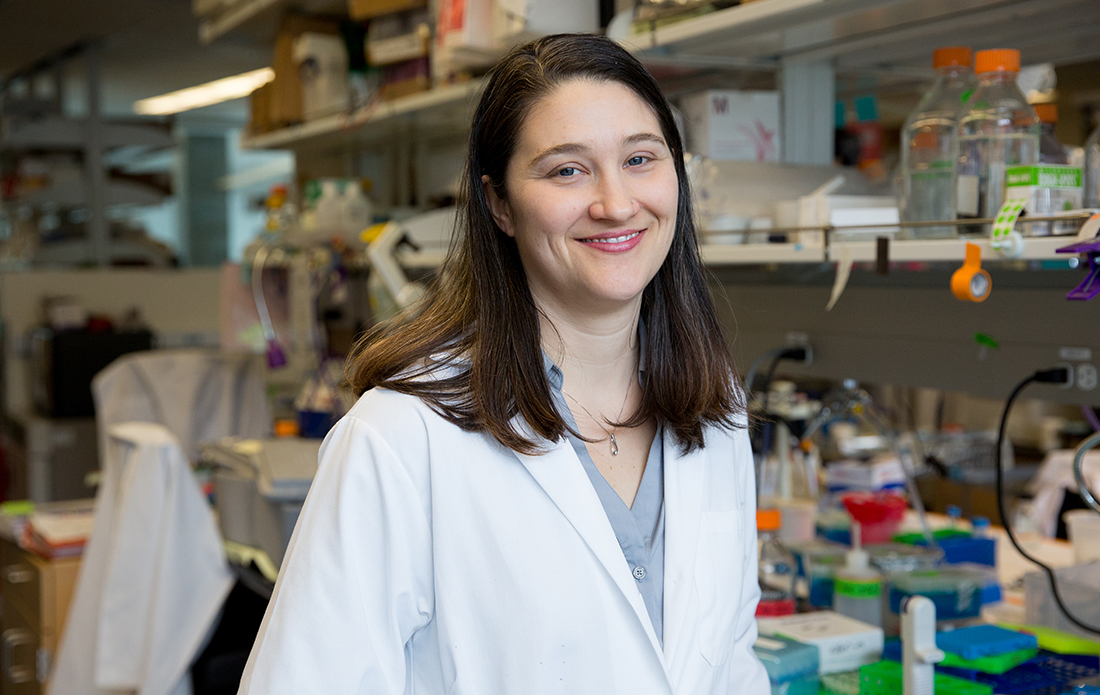Bree Mitchell, Ph.D. is the Associate Director of the OHSU Knight Cancer Institute’s Cancer Early Detection Advanced Research Center (CEDAR). In this role, she facilitates scientific collaboration and program development, oversees organizational development and operations, and leads strategic planning.
Mitchell joined OHSU in 2012. Previously, she served as deputy director at Stanford University’s Canary Center for Early Detection, and as a senior research scientist at Intel Corp., where she led a collaborative project with Cedar-Sinai Medical Center focused on cancer biomarker discovery research. She began her scientific career as a graduate student at the Fred Hutchinson Cancer Research Center investigating mass spectrometry as a tool for blood-based cancer biomarkers.
In a Q&A with Mitchell, we learn more about what motivates her work to end cancer as we know it, why early detection matters, and how OHSU is doing things differently.
What motivates you to end cancer as we know it?
I care about advancing science and impacting patients — that is my bottom line. Nothing else matters.
Why did you choose to specialize in early detection cancer research? What drives you to do this work?
My interest started while I was a graduate student – it was an area that most were not paying attention to. It was clear that the earlier we detect cancer, the better patients do. Early detection was the most obvious place to make the biggest impact.
I’m motivated every day by patients. I’ve also had an uncle, an aunt and a grandfather die of cancer. My aunt and uncle died young, which is why it is so important to detect cancer in populations where we’re ordinarily not looking for it. They were also living in rural communities, with limited access to care. Early access to those screenings would have saved my family members’ lives. We are working to improve access for everyone by creating tools that are easily accessible to every community.
I, just like everyone else, don’t want to see people suffer. If I can help alleviate that — I will feel accomplished in my life.
Why did you choose to come to OHSU?
I was drawn to OHSU because of the emphasis on early detection. The ideas being presented were really novel. I was also really drawn to the team science approach and the flat structure – we are open to ideas from anyone, not just based on seniority or experience. Additionally, collaboration at OHSU is less bound and more open. There is a genuine interest of everyone here to collaborate with others. We have flexible processes and value the expertise of our peers, enabling people to think beyond their own needs and frames of reference. I knew that coming to the OHSU Knight Cancer Institute’s Cancer Early Detection Advanced Research Center (CEDAR) was the best chance I would have to solve the problems of early detection.
Why should people support early detection right now – why is this is the right time and why is OHSU the right place?
Early detection is at a perfect stage for investment because of the advancements in technology and biological knowledge. These big innovations mean we can propel early detection in a way that we couldn’t before. OHSU is doing things differently: the collaborative culture, the amazing scientists with good ideas — we are well positioned to make a big impact.
“Donors are what allowed CEDAR to happen. This model would not be possible under NIH funding because it wouldn’t allow for high-risk projects or our out-of-the-box thinking. Those are the things we need to cure cancer. We simply can’t do this important work without donors.”
Tell me what a typical day looks like in your role as Associate Director of CEDAR? What excites you most about this role and the opportunity of helping to launch a relatively new program?
The job is 50% science and 50% administrative leadership. I work with CEDAR director, Dr. Sadik Esener, very closely. We work together to brainstorm project ideas, organizational structure, culture, vision, and what infrastructure or systems we need to create to support research and make it easier to do the science.
It’s really exciting to start something from the beginning and liberating to build it outside of academic norms. I didn’t have to build a program that fit in existing structure and can dream about ideal system and structure. There is an openness to trying new things. This organizational model creates a different dynamic: there are already a lot of cool ideas, interesting science, and a passion for the model of the team science to solve complicated problems.
What does it mean to be a successful woman in science?
I try to be a role model for younger women, always advocating for diversity in science – a champion for them. And that’s supported here. We all have a responsibility to do that better.

